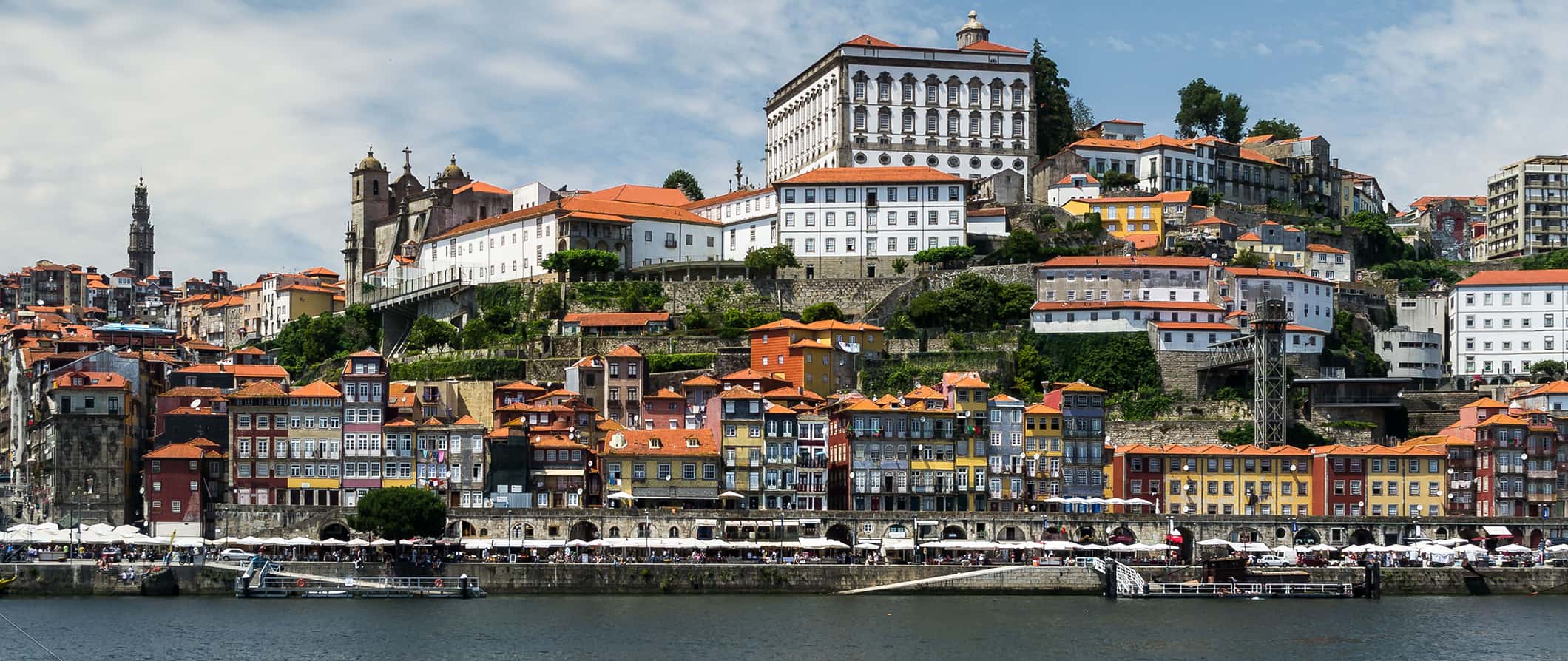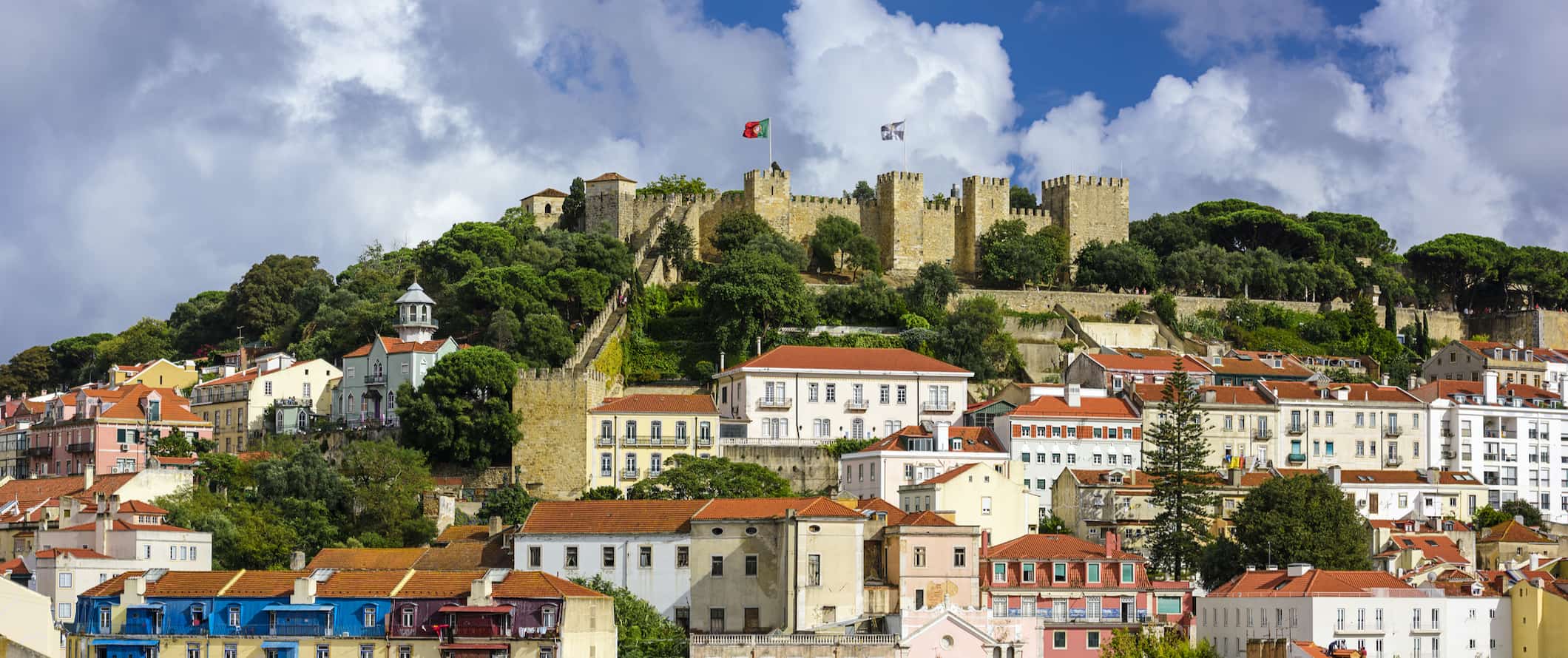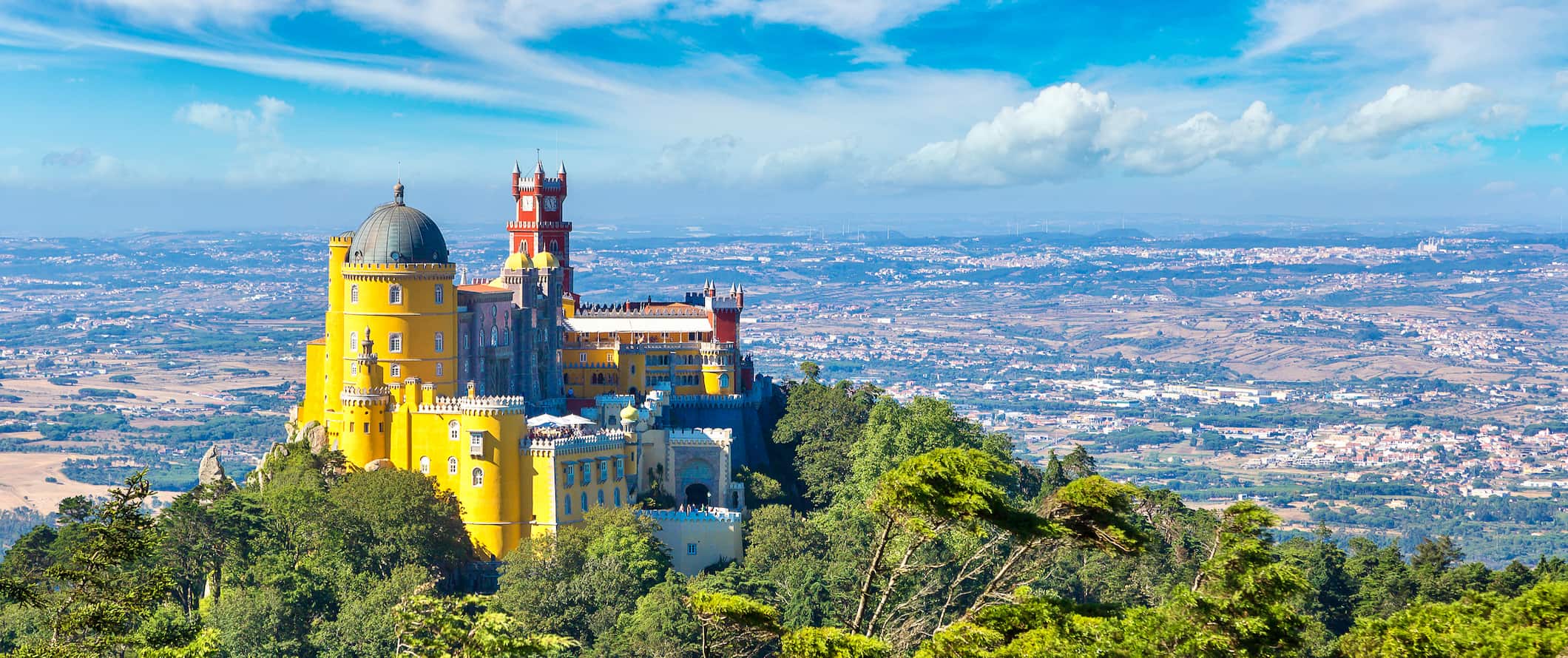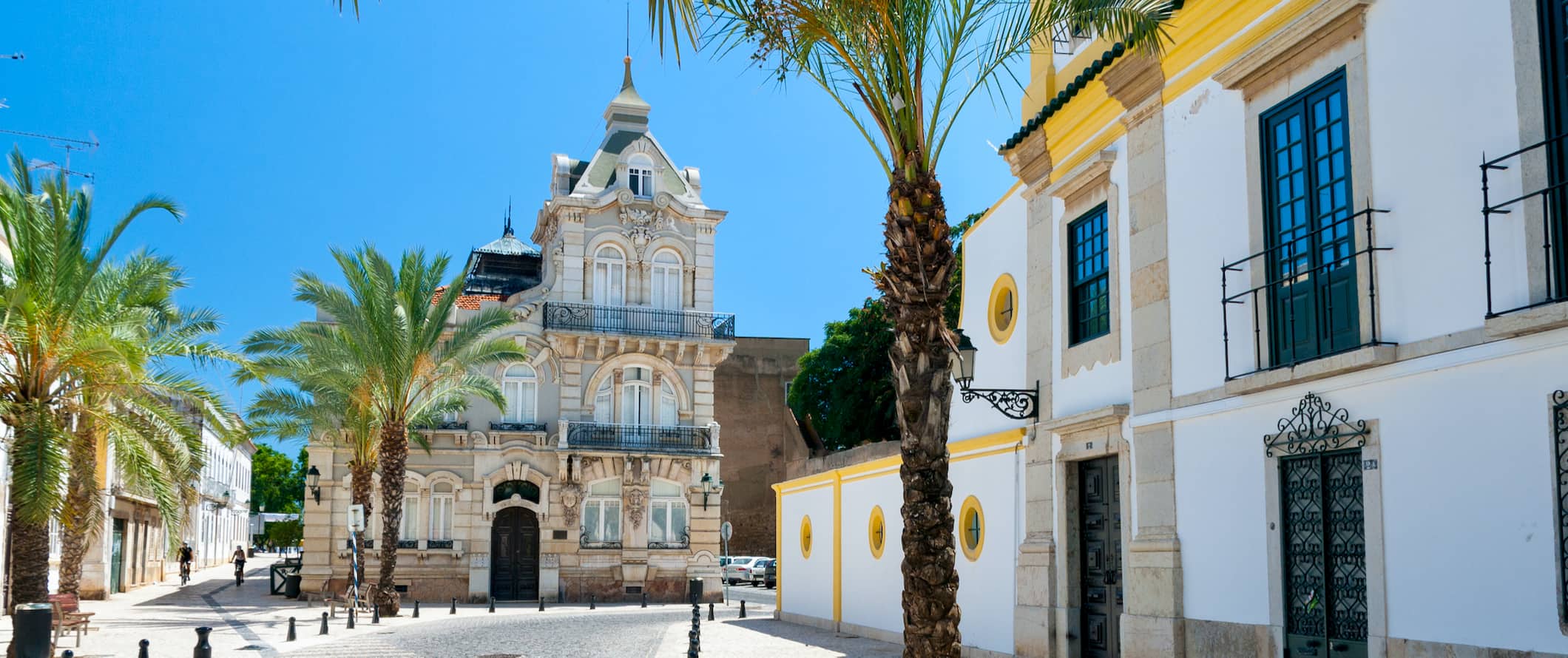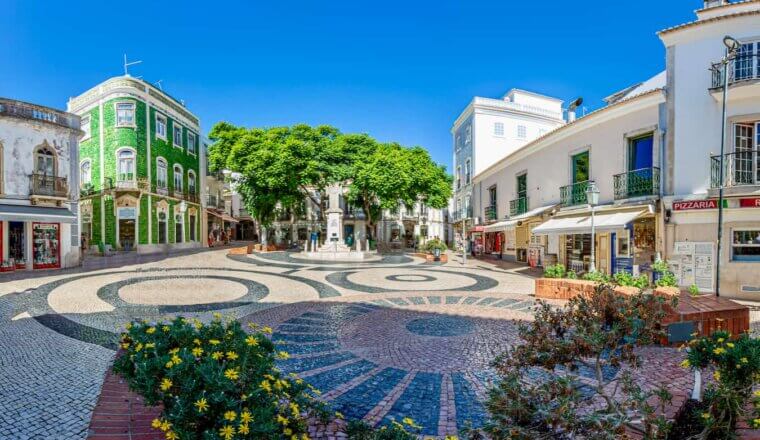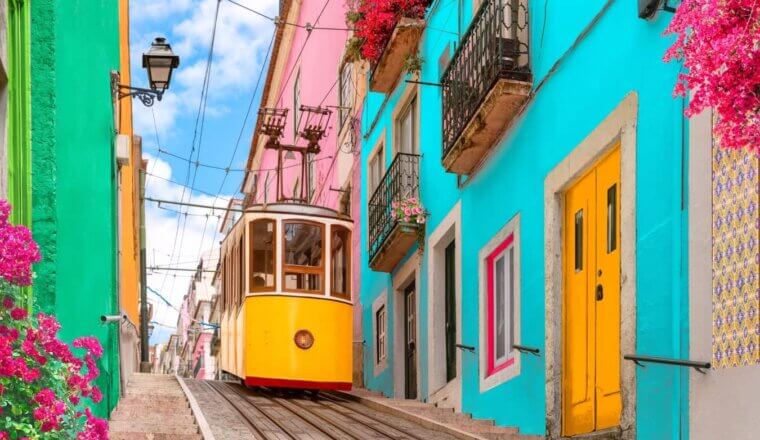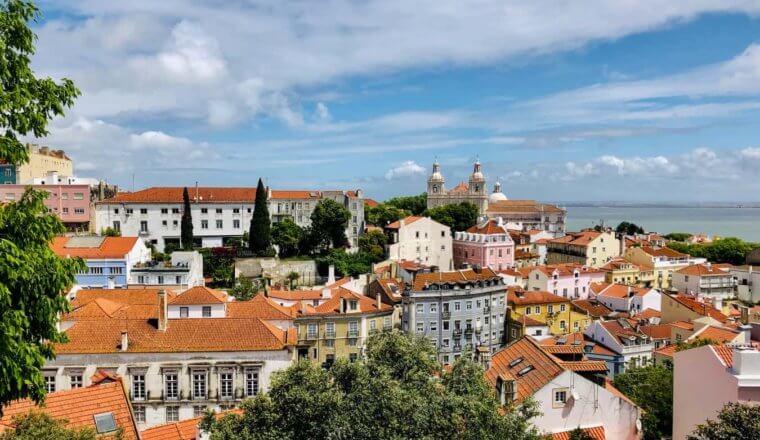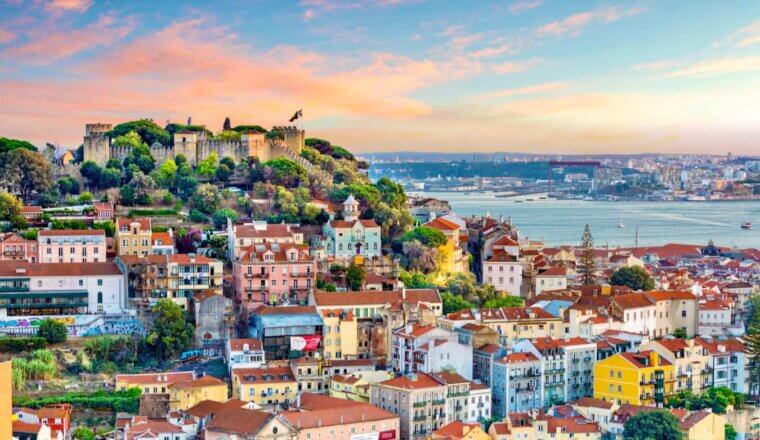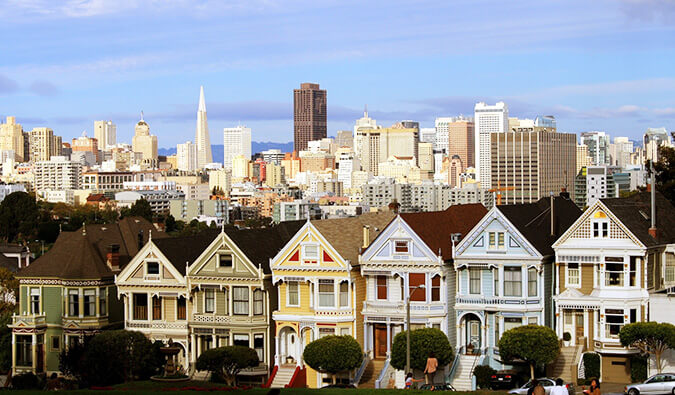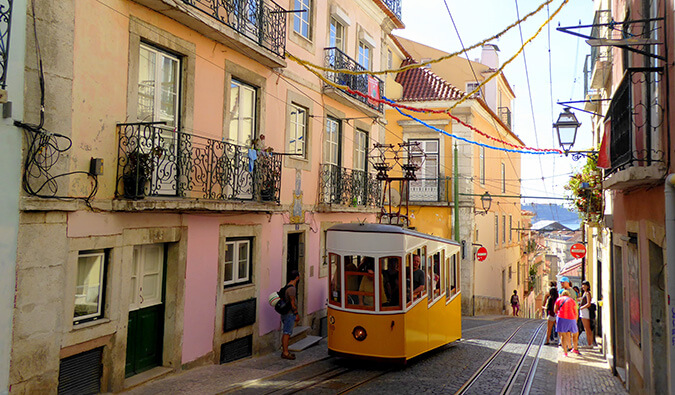Portugal is a country blessed with stunning beaches, a rugged coastline, cosmopolitan cities, and incredible weather. Throw in great food, plentiful wine, and cheap prices, and it makes for a perfect — and underrated — holiday spot.
I’ve been to Portugal many times over the years and I never tire of it. It’s one of the most unappreciated countries in Europe and sees a fraction of the tourists that its neighbors do.
Sure, in recent years Lisbon has become a hub for digital nomads, expats, and retirees thanks to its low cost of living. But, in the rest of the country, not much has changed.
Best of all, fewer crowds mean a better, more local experience that won’t break the bank.
This Portugal travel guide can help you plan your trip, save money, and make the most of your time in this stunning and underrated European gem!
Table of Contents
Click Here for City Guides
Top 5 Things to See and Do in Portugal
1. Admire Lisbon
Lisbon is gorgeous. I instantly fell in love with it. It has mystique, history, and great food. Take a trip to the Castle of St. George, see the 16th-century UNESCO Belem Tower, admire the churches (specifically the Sé de Lisboa Cathedral), listen to some traditional Fado music, and enjoy the delicious cuisine. It’s one of the most affordable and underrated capitals in Europe!
2. Visit Batalha Monastery
Batalha is a town located just 90 minutes by car from Lisbon. The town is home to Batalha Monastery, officially known as the Monastery of Saint Mary of the Victory. Built in 1388, it’s one of Europe’s greatest Gothic masterpieces and makes for a popular day trip from Lisbon. The monastery took 131 years to build and is now a UNESCO World Heritage Site. Walking through the gigantic gothic doorway and seeing the towering interior (which is lined with 16th-century stained-glass windows) is absolutely breathtaking. Admission is 6 EUR, but you can also purchase a combo ticket to see The Convent of Christ in Tomar and The Abbey of Santa Maria for 15 EUR.
3. Explore the Azores
These 9 islands lie 1,500 kilometers (930 miles) from Lisbon in the Atlantic Ocean. Each of the islands offers a slow-paced way of life, unique wildlife, and stunning beaches. These islands are very off the beaten track and a good “out of the way” place to go. São Miguel is great for hiking and road trips, Pico has great wine, and São Jorge has incredible nature, but you can’t go wrong with any of the islands here!
4. Party in Lagos
Lagos is the place people go to party in Portugal. It’s an excellent destination to soak up the sun. During the summer, this is one of Europe’s premier party destinations for young travelers. there are also incredible beaches, great surfing, and lots of historic churches here. The city is also home to Europe’s first slave market, a sobering sight that dates back to 1444.
5. Enjoy Porto
Porto is one of Portugal’s most colorful cities. Spend some time getting lost and meandering the narrow alleyways and steep staircases that lead to the scenic Douro River. Hop on a river cruise, visit the iconic Lello & Irmão bookstore, tour the museums, and visit the surrounding Duoro Valley and its many vineyards (this is the region where port wine comes from, hence the name). It’s also one of the main launching points for the famous Camino Portugues hike that leads to Santiago de Compostella in Spain (which takes 10-14 days, though you can definitely just do a day hike or a smaller section of the trail).
Other Things to See and Do in Portugal
1. Journey to Evora
One of Portugal’s many UNESCO World Heritage Sites, Evora is a small town that offers an array of beautiful and historic buildings. Located 90 minutes east of Lisbon, Evora’s most famous landmark is the Temple of Diana, a Roman temple and UNESCO site from the 1st century. But there is also the Praça do Giraldo, the town’s main square, which is a charming spot to people-watch and embrace the local pace of life. This is small-town Portugal at its best.
2. See the Religious Monuments in Braga
Located one hour north of Porto, the beautiful city of Braga boasts numerous Baroque monuments, including one of the country’s best-known sights: the Bom Jesus Sanctuary (a Catholic shrine and pilgrimage site). The old and the new city are connected by the main square, Praça da Republica, which is a great place for a stroll. The city’s cathedral is also very much worth a visit, as it is the country’s oldest (construction started in 1509).
3. See the Abbey of Santa Maria
Located between Lisbon and Porto, the Abbey of Santa Maria is Europe’s largest Cistercian building (the Cistercians are a Catholic order of monks and nuns, founded in 1098). You can wander around the abbey at your leisure to learn more about its cloisters, dormitories, library, and more. The church is free to enter but the monastery costs 6 EUR. You can save money by purchasing a combo ticket to the Convent of Christ in Tomar and the Batalha Monastery for 15 EUR.
4. Head to Sintra
Lord Byron, an English poet writing in the 18th century, said that Sintra was “perhaps in every respect the most delightful [place] in Europe.” If you are visiting Lisbon, you should definitely make an effort to come here to see its palaces, wonderful views, and museum collections. It’s one of the most beautiful places in the entire country. The train takes about an hour from Lisbon and costs under 5 EUR.
5. Learn about the Knights Templar in Tomar
The big attraction in the town of Tomar is the Templar Castle and Convent of Christ. It was the headquarters for the Knights Templar in the 12th century (they were a Catholic military order founded in 1118 that fought in the Crusades). The castle, a UNESCO World Heritage Site, was an important defensive stronghold against the encroaching Moors (Muslims from North Africa who eventually conquered parts of Spain and Portugal). Admission is 6 EUR or 15 EUR with a combo ticket.
6. Hit the water
Aveiro, located 72 kilometers (45 miles) south of Porto, lies on what’s known as the Silver Coast. This small university town has a historic center built on canals, giving rise to its nickname “the Venice of Portugal.” The winds here create good opportunities for windsurfing and surfing too. You can rent surfboards for as little as 15 EUR per day, while kitesurfing and windsurfing rentals around 50 EUR. If you want lessons, most two-day courses cost around 130 EUR.
7. Get lost in Coimbra
Another university city, Coimbra is located between Lisbon and Portugal and is home to one of the world’s oldest universities (the university was founded in 1290 and moved to Coimbra in 1537). There is a famous and beautiful old library that you can tour, but the real thing to do in Coimbra is just wander through its many historic streets. There are plenty of churches and gardens to take in as you stroll around soaking up the history. It’s a postcard-perfect destination.
8. Attend a Fado performance
Fado is a local type of music that originated in Lisbon. It’s a rather haunting, mournful style often focused on the hardships of the poor or life at sea. The music first appeared in the 19th century and was popular with the working class (especially sailors). The word “fado” likely stems from the Latin word for fate, which is why many of the songs focus on the inevitability of misfortune and suffering. While melancholic, the music is also beautiful and poetic.
9. Check out Faro
Faro is a common starting point for tours of the Algarve region, a southern region brimming with great beaches, tasty seafood, and plenty of tourists. Faro itself isn’t a beach city, but has a lovely old town and is a great place to spend a day before you explore the coast. Don’t miss the cathedral and the municipal museum to learn more about the city.
10. Stand at the edge of Europe
Cape Sagres is the most southwestern point on the European continent. It was here that Henry the Navigator, one of Portugal’s most revered figures during its empire, had his famous navigation school. He was one of the central figures to kick start the Age of Discovery in the 15th century that put Portugal on the map (literally). His development of lighter caravel ships allowed explorations in West Africa, which also launched the slave trade.
11. Try a Pastéis de nata
This pastry is a Portuguese staple. You’ll find these delicious custard-filled tarts at every bakery. They’re a must for an authentic food experience and cost around 1 EUR.
12. Walk the Templar Stairs
Located in Sintra, Quinta da Regaleira is a UNESCO World Heritage Site composed of several historic buildings, including a huge palace and chapel. But the highlight is the Initiation Wells, two massive wells that stretch far underground. They were built by the Templars for their initiation rituals. Would-be knights would have to travel down a winding staircase into the massive wells blindfolded and navigate a labyrinth before coming back to the light. Today, you can tour the wells and explore them yourself. Admission is 10 EUR.
13. Hike the Camino
The Camino Portugues (The Portuguese Way) is a pilgrimage trail that stretches from Lisbon to Santiago de Compostela in Spain. It’s the second most popular Camino, after the main French Way, though it sees a fraction of pilgrims compared to the main route. Most hikers start in Porto, with the 280 kilometers (173 miles) journey taking around 10-14 days, though it’s also possible to start in Lisbon for a longer trek.
For more information on other destinations in Portugal, check out these guides:
Portugal Travel Costs
Accommodation – Overall, you’ll find accommodation very affordable in Portugal, especially if you are staying in hostels. A dorm bed in a hostel starts at 15-25 EUR per night for dorms with 6-8 beds. For a private room in a hostel, costs range from 50-100 EUR per night. Free Wi-Fi and lockers are standard and most hostels have kitchens too. Many also offer free breakfast.
For those traveling with a tent, camping is available around the country for 10-20 EUR per night for a basic tent plot without electricity.
A room in a two-star budget hotel costs between 40-75 EUR per night. Expect basic amenities like free Wi-Fi and TV. Free breakfast is sometimes included as well.
On Airbnb, private rooms start at 30-50 EUR per night while entire homes/apartments average around 100 EUR.
Food – Fish and seafood form the backbone of Portuguese cuisine (Portugal eats the most seafood per capita in Europe). Cod, sardinhas assadas (grilled sardines), sea bass, and shellfish are some of the most common staples. Other popular dishes include cozido à portuguesa (boiled stew), peixinhos da horta (breaded and fried vegetables), and cured ham. Be sure to also try the prego (beef sandwich) or the bifana (pork sandwich). You can find them at local cafes for just 5 EUR.
You can find snacks in bakeries for 2 EUR or less, light meals and sandwiches for around 8-10 EUR, and fast food for around the same price.
If you want a three-course meal with drinks, you’re looking at spending closer to 20 EUR. After that, the sky is the limit!
For a casual restaurant meal, expect to pay around 10 EUR.
Beer is around 3 EUR while a latte/cappuccino costs around 2.50 EUR. Bottled water is less than 1 EUR.
If you’re cooking, groceries cost around 35-45 EUR for a week’s worth of food. This includes staples like pasta, rice, produce, and some meat or seafood.
Backpacking Portugal Suggested Budgets
On a backpacker budget, you can visit Lisbon for around 45 EUR per day. On this budget, you’ll be staying in a hostel dorm room, cooking all of your meals, limiting your drinking, using public transportation to get around, and sticking to free activities like free walking tours, enjoying the beaches, and exploring the Old Town. If you plan on drinking, add 5-15 EUR per day to your budget.
On a mid-range budget of 125 EUR per day, you can stay in a private Airbnb or private hostel room, eat at cheap local restaurants and cook some meals, use public transportation and take the occasional taxi, visit paid attractions like the botanic gardens and Belem Tower, and enjoy some drinks at the bar.
On a “luxury” budget of 235 EUR or more a day, you can stay in a hotel, eat out for every meal, drink what you want, rent a car to explore the region, and visit as many museums and attractions as you’d like. This is just the ground floor for luxury though — you can easily spend more if you really want to splash out!
Portugal Travel Guide: Money-Saving Tips
For the most part, Portugal is an incredibly affordable destination. Food, accommodation, wine – it’s all very cheap (especially when compared to other EU countries). As long as you’re not splurging on a ton of booze or eating at the overpriced tourist restaurants, you’ll find it easy to save big while still enjoying yourself. Here are a few more ways to save money in Portugal:
- Look for free museum visits – Some museums are free on Sundays. Check with the local tourism board or the museum’s website for more information on free/discounted hours.
- Skip the taxis – Taxis add up so if you’re on a budget, skip the taxis and use the metro or bus system to go where you need to.
- Say “no” to bread – When eating out, a selection of bread and olives may be brought to your table before your meal. These aren’t free, so just say no if you’re on a budget.
- Stay at a pensão – These family-run inns offer decent lodgings for very little money and are a great alternative to hotels.
- Get a tourist card – Certain cities, like Porto and Lisbon, offer tourist cards that provide unlimited access to public transportation (normally for one, two, or three days) and free or discounted access to museums and monuments. If you plan to see lots of sites, be sure to go to the local tourism office and pick up one of these cards!
- Stay with a local – If you plan ahead, you can usually find Couchsurfing hosts all throughout the country. This way, you not only have a free place to stay but you can connect with a local who can share their insider tips and advice. Just send your requests early in the summer.
- Cook your meals – Restaurants here are cheap, but eating out all the time adds up. Visit the local market to stock up on groceries and cook a few meals. You’ll save a ton!
- Bring a water bottle – The tap water here is safe to drink so bring a reusable water bottle to save money and reduce your plastic use. LifeStraw is my go-to brand as their bottles have built-in filters to ensure your water is always clean and safe.
Where to Stay in Portugal
Budget accommodation is plentiful in Portugal. Here are my suggested places to stay:
- Lookout! Lisbon Hostel (Lisbon)
- Lisboa Central Hostel (Lisbon)
- Yes! Lisbon Hostel (Lisbon)
- Rising Cock Party Hostel (Lagos)
- Gold Coast Calm Hostel (Lagos)
- Casa D’Alagao (Faro)
- HI Hostel Faro (Faro)
- Rivoli Cinema Hostel (Porto)
- Gallery Hostel (Porto)
- Pilot Design Hostel & Bar (Porto)
How to Get Around Portugal
Public transportation – Larger cities like Porto and Lisbon have comprehensive public transit, including trains, trams, and buses. Tickets generally cost 1.20-1.50 EUR.
Train – Portugal has a great rail system. Tickets are affordable, with a ride from Porto to Lisbon costing around 25 EUR. Even the high-speed rail is affordable (unlike in many other European countries); it’s about the same price between Porto and Lisbon as the regular train. A train trip between Braga (in the far north) to Faro (at the southern tip) costs between 65-75 EUR.
Bus – Buses are the cheapest way to explore, and they’re also not super time-consuming since Portugal isn’t a huge country. A cross-country bus from Lisbon to Lagos costs between 15-20 EUR, while an eight-hour journey from Braga to Faro costs around 30 EUR.
Lisbon is the main hub for budget-friendly Flixbus routes around the country. It’s the cheapest way to get from Portugal and into the rest of Europe. A bus to Madrid, Spain costs around 30 EUR.
Flying – Flying is the best way to get to the Azores, though it’s likely not worth it for getting around the mainland. A flight from Lisbon to the Azores costs as little as 50 EUR, while Lisbon to Madeira starts at about 40 EUR. TAP Air is Portugal’s official airline.
Taxis – Taxis start at 3.50 EUR and go up by about .80 EUR per kilometer. Skip them if you can as they add up fast!
Ridesharing – Uber is available in Portugal’s larger cities but it’s not much cheaper than taxis. I’d still skip ridesharing altogether if you’re on a budget.
Bike rental – Locals like to get around by bike and bike rentals are available in all the major cities. You can rent a basic city bike for around 10-15 EUR per day.
Car rental – Car rentals cost as little as 25 EUR per day for a multi-day rental. It’s a super affordable way to explore if you have someone to split the cost with (especially in the Azores). Drivers need to be at least 18. For the best rental car deals, use Discover Cars
Hitchhiking – Hitchhiking in Portugal is relatively easy, though it’s not super common. You’ll have the best chances sticking close to the coast as that’s where most traffic is. Make sure to plan for the weather and bring lots of water and a hat as it can get warm. For more tips and advice, check out Hitchwiki.
When to Go to Portugal
Peak season in Portugal is during the summer months of June-August. Temperatures hover around 23°C (74°F) and popular destinations like Porto and Lisbon experience an influx of visitors. Prices increase during this time as well. But the overall atmosphere and weather are great, so it’s still worth visiting during peak season.
Personally, I think the best time to visit Portugal is the shoulder season in the spring and fall (April-May and September-October). Temperatures range from 18-22°C (65-71°F) so it’s still warm enough to explore and enjoy the outdoors. There aren’t as many crowds and prices are cheaper, making it an ideal time for budget travelers.
Winter is from November to February. It gets cold and tourist crowds thin out considerably. Temperatures vary quite a bit from place to place, but overall, the temperature averages around 12°C (53°F). I’d avoid visiting in the winter if you can, however, if you’re on the continent already Portugal is one of the warmer places to spend the winter.
How to Stay Safe in Portugal
Portugal is very safe for backpacking and solo travel as violent attacks are uncommon. Pickpocketing is the most common crime and can occur in touristy areas and on public transportation. Be aware of your surroundings when you’re in markets, on busy streets, and when using the metro. Always keep your valuables secure and out of sight just to be safe.
Drugs here have been decriminalized, but it’s best to avoid them as selling drugs is still illegal. If approached and offered drugs, politely decline and continue on your way
You won’t find a lot of travel scams in the country but read this article on common travel scams to avoid just to be safe.
Solo female travelers should generally feel safe here, however, the standard precautions apply (never leave your drink unattended at the bar, don’t walk home alone at night if intoxicated, etc.).
If you experience an emergency, dial 112 for assistance.
Remember: always trust your gut instinct. If a taxi driver seems shady, stop the cab and get out. If your hotel is seedier than you thought, get out of there. You have every right to remove yourself from the situation. Make copies of your personal documents, including your passport and ID. Forward your itinerary along to loved ones so they’ll know where you are.
The most important piece of advice I can offer is to purchase good travel insurance. Travel insurance will protect you against illness, injury, theft, and cancellations. It’s comprehensive protection in case anything goes wrong. I never go on a trip without it as I’ve had to use it many times in the past. You can use the widget below to find the policy right for you:
Portugal Travel Guide: The Best Booking Resources
These are my favorite companies to use when I travel. They consistently have the best deals, offer world-class customer service and great value, and overall, are better than their competitors. They are the companies I use the most and are always the starting point in my search for travel deals.
- Skyscanner – Skyscanner is my favorite flight search engine. They search small websites and budget airlines that larger search sites tend to miss. They are hands down the number one place to start.
- Hostelworld – This is the best hostel accommodation site out there with the largest inventory, best search interface, and widest availability.
- Booking.com – The best all around booking site that constantly provides the cheapest and lowest rates. They have the widest selection of budget accommodation. In all my tests, they’ve always had the cheapest rates out of all the booking websites.
- HostelPass – This new card gives you up to 20% off hostels throughout Europe. It’s a great way to save money. They’re constantly adding new hostels too. I’ve always wanted something like this and glad it finallt exists.
- Get Your Guide – Get Your Guide is a huge online marketplace for tours and excursions. They have tons of tour options available in cities all around the world, including everything from cooking classes, walking tours, street art lessons, and more!
- The Man in Seat 61 – This website is the ultimate guide to train travel anywhere in the world. They have the most comprehensive information on routes, times, prices, and train conditions. If you are planning a long train journey or some epic train trip, consult this site.
- Rome2Rio – This website allows you to see how to get from point A to point B the best and cheapest way possible. It will give you all the bus, train, plane, or boat routes that can get you there as well as how much they cost.
- FlixBus – Flixbus has routes between 20 European countries with prices starting as low 5 EUR! Their buses include WiFi, electrical outlets, a free checked bag.
- SafetyWing – Safety Wing offers convenient and affordable plans tailored to digital nomads and long-term travelers. They have cheap monthly plans, great customer service, and an easy-to-use claims process that makes it perfect for those on the road.
- LifeStraw – My go-to company for reusable water bottles with built-in filters so you can ensure your drinking water is always clean and safe.
- Unbound Merino – They make lightweight, durable, easy-to-clean travel clothing.
- Top Travel Credit Cards – Points are the best way to cut down travel expenses. Here’s my favorite point earning credit cards so you can get free travel!
- BlaBlaCar – BlaBlaCar is a ridesharing website that lets you share rides with vetted local drivers by pitching in for gas. You simply request a seat, they approve, and off you go! It’s a cheaper and more interesting way to travel than by bus or train!
Portugal Travel Guide: Related Articles
Want more info? Check out all the articles I’ve written on Portugal travel and continue planning your trip:
